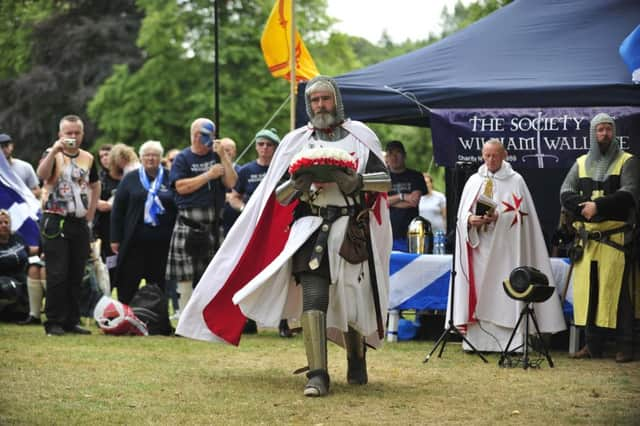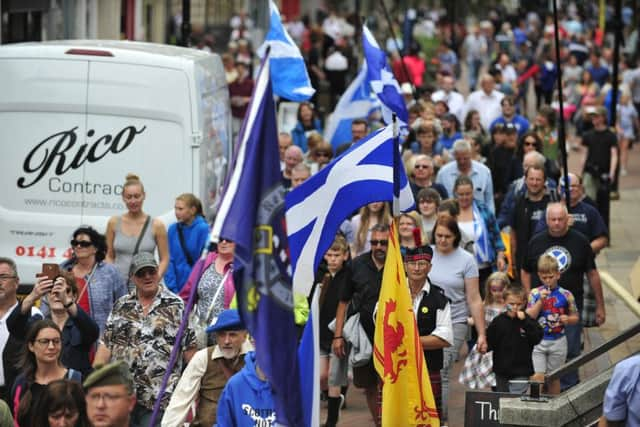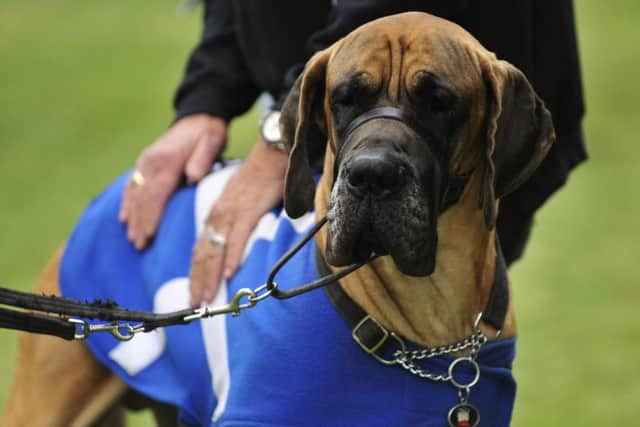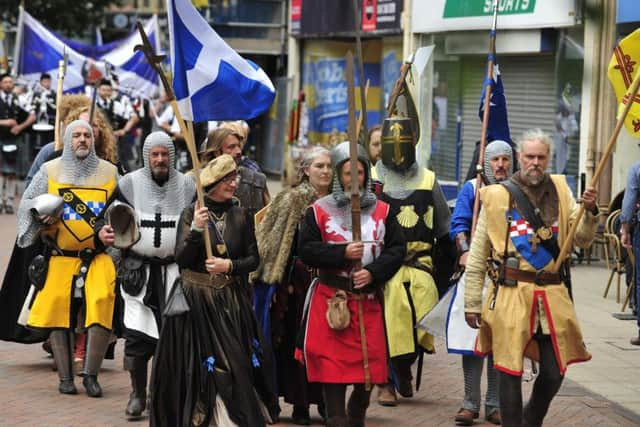A day when Falkirk's gory and heroic medieval past came alive


To these must be added a possibly similar number of English and Welsh soldiers, who despite the overwhelming victory over the forces of Sir William Wallace suffered badly in the early stages.
On a site within easy reach of Falkirk town centre, the Scottish army stood and died with its back to Callendar Wood.
Advertisement
Hide AdAdvertisement
Hide AdThe close but largely unprotected ranks of spearmen were demolished by relentless hails of arrows from Welsh longbowmen, then ridden down by heavily armoured mounted men-at-arms.


It all happened a very long time ago, but is remembered today as a pivotal episode of the Scottish Wars of Independence - a period in which kingdoms were often won or lost by simple brute force.
Yesterday’s annual commemoration of the battle was markedly different from the many which have been staged over the years, because besides remembering the human cost of the catastrophe there were several new elements aimed at helping people - local and visitors - to understand how war was waged in the supposed era of chivalry.
History groups the Society of John de Graeme and the Society of William Wallace excelled themselves by giving Falkirk a heritage event that was both a commemoration and an imaginative interpretation of our dark and brutal past.
Falkirk Delivers and Falkirk Community Trust also played an important role in making this enlarged event a success - one reckoned likely to be further developed in years to come.


Despite the grim context it was a family-friendly outing, with foot-stomping music from Clan na Drumma, a day which had something to offer all ages - you didn’t need any special interest in history to enjoy the spectacle.
More than just a historic pageant, of which there are many fine examples across Britain, it was a day when people were invited to imagine what life must have been like in the days when might was always right - and when human beings at the lower end end of the social scale were eminently expendable.
However it was also a time to remember the exploits of men like John de Graeme, the “local hero” buried in the churchyard of what is now Trinity Church - a paladin prepared to die in mortal combat for a cause he believed was just.
Advertisement
Hide AdAdvertisement
Hide AdThe loan to Callendar House of what is reputed to be de Graeme’s original sword - a fearsome two-handed weapon with a five-foot blade - also lent a special dimension to the commemoration.


Edward Longshanks’ victory at Falkirk, and all the suffering involved, ultimately meant nothing - because men like Sir John simply refused to countenance surrender.
The Plantagenet British-French empire planned by Edward was never realised, and all his ambitions were in vain.
Learning that Robert de Brus was making a pitch for the kingship of Scotland the ageing warlord was to lead yet another army northwards, only to die before he could cross the border.
The stirring sound of the pipes, as they led the parade through the town yesterday, was a requiem for the fallen - and a recognition of the heavy price that is always paid for freedom.